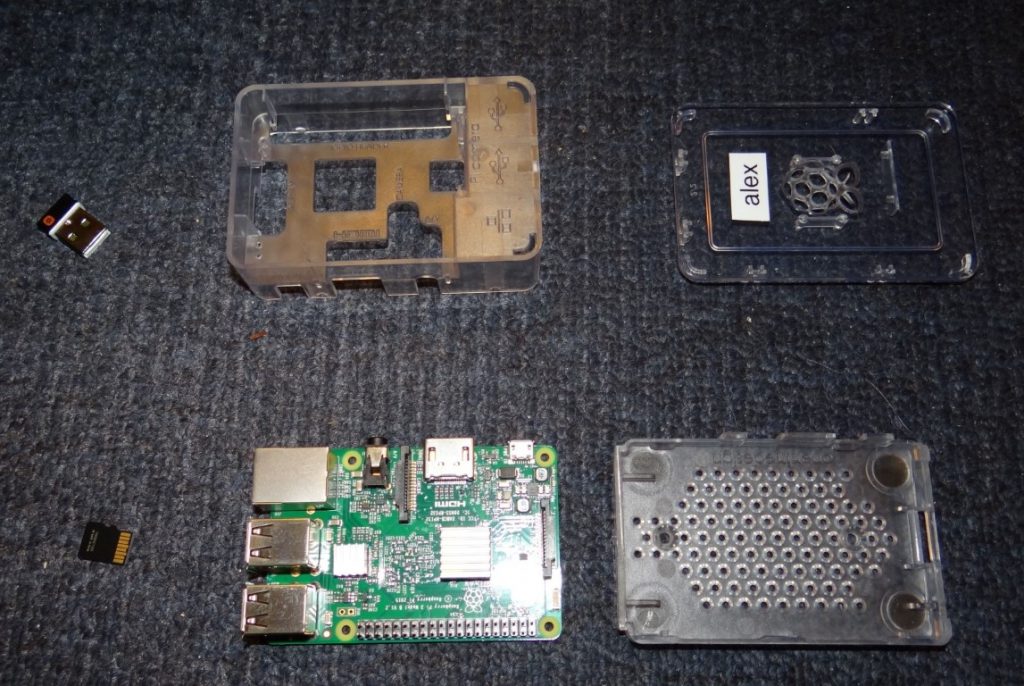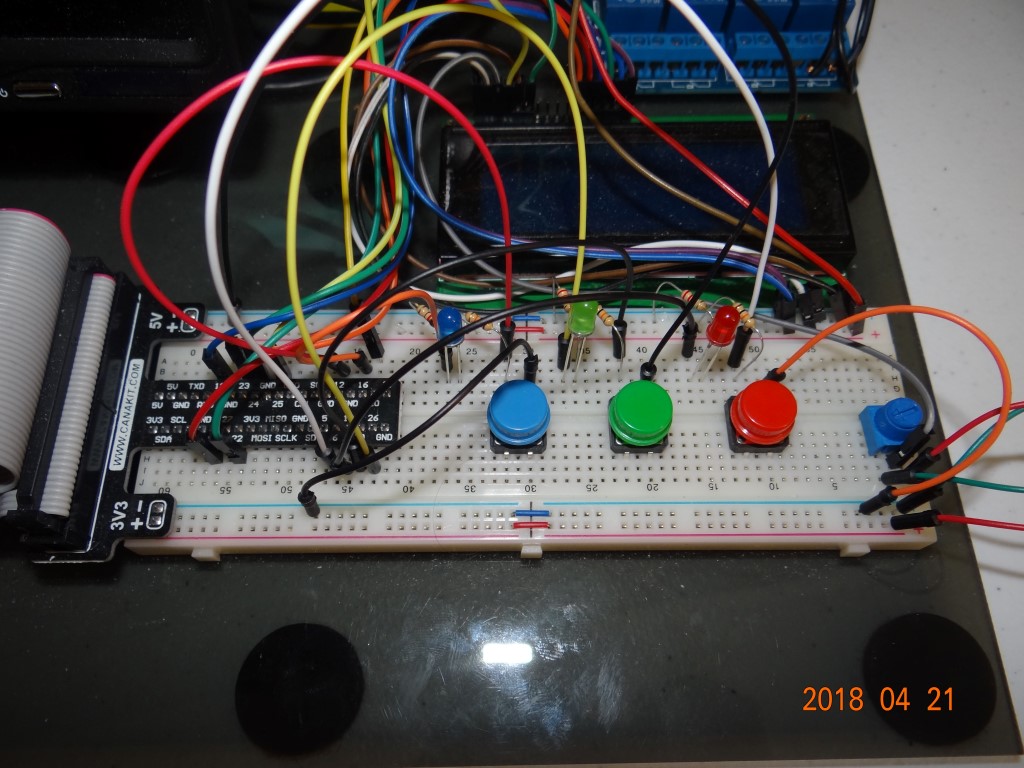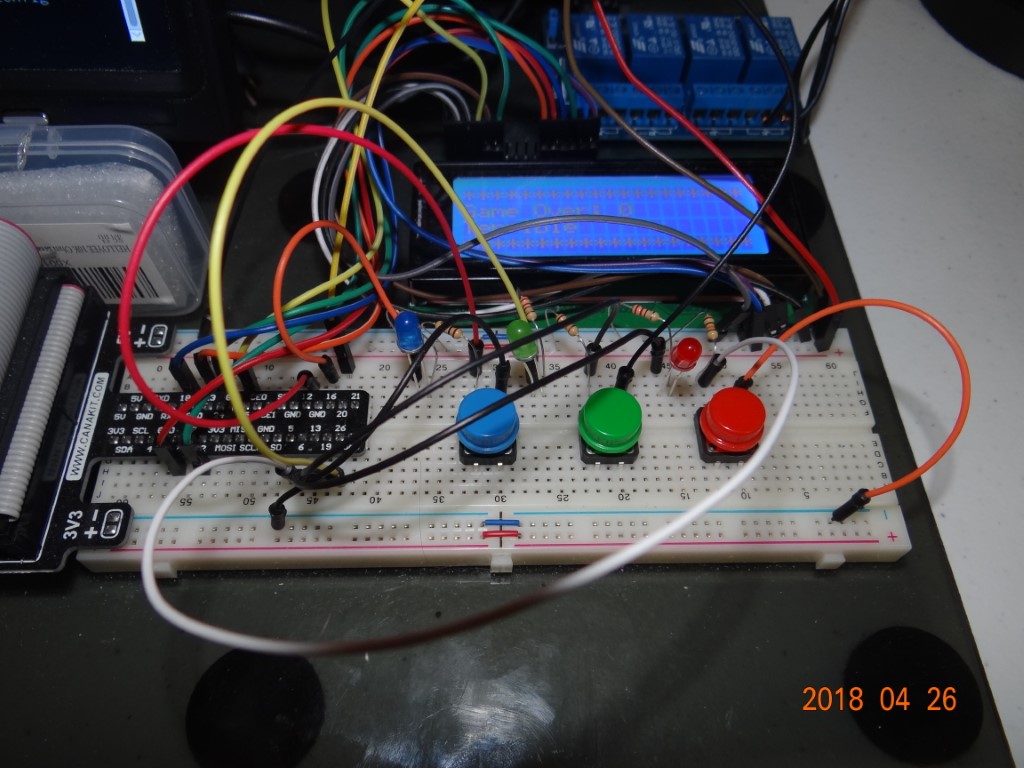Class 1: Introduction to Raspberry Pi & Basic Electronics




Student’s learn the basics of electronics and Raspberry Pi Python programming. In the end, each student will have a fully working Raspberry Pi Catch the LED! reaction game in their possession!
The class consists of 10 sessions / modules of 3 hours each.
To keep the material costs at a minimum, we are not using any of the commercial “Raspberry Pi Laptop” solutions that are available (these are usually in the 300 $ range). Instead, our student’s are using the following equipment:
- “Ultimate Starter CanaKit” Raspberry Pi 3 (b). This kit includes a case, breadboard, electronic components, etc.
- 8″ mini TFT HDMI monitor
- Wireless USB keyboard with integrated mouse pad from LogiTech.
The overall learning material costs are hence in the ~170 $ range, rather than 300 $ plus.
The course / class schedule is roughly as follows:
- Assembly the Raspberry Pi (RPi) and getting to know the system and PIXEL desktop. Download: Slides. Exercises. Solutions. Code.
- Intro to basic electronics. Breadboard, power supply, LEDs, pus buttons, resistors. Download: Slides. Exercises. Solutions. Code.
- Digital Output – blink an LED with the Raspberry Pi. Python gets introduced step by step. Download: Slides. Exercises. Solutions. Code.
- Digital Input – read a push button with the RPi. Download: Slides. Exercises. Solutions. Code.
- Digital Input & Output – combine 3 and 4. Download: Slides. Exercises. Solutions. Code.
- Experiments with the 3color LED. A push button noise maker machine (PCM sample playing via push buttons). Download: Slides. Exercises. Solutions. Code.
- Towards the “Catch the LED!” reaction game. More advanced Python programming. Download: Slides. Exercises. Solutions. Code.
- “Catch the LED!” game continued. Download: Slides. Exercises. Solutions. Code.
- “Catch the LED!” game finished. Download: Slides. Exercises. Solutions. Code.
- Turning the game into a self-contained device with Rasperry Pi Zero, battery, etc. See image above. Download: Slides. Exercises. Solutions. Code.
Each module comes with a set of slides, step-by-step exercises and instructions, as well as solution source code. For illustration, we have included the first 2 sets of slides above (just follow the links).
Pricing
The overall basic material cost is 170 $. This includes the CanaKit, RPi 3, monitor, wireless keyboard with included mouse pad, basic electronics components etc. Students that wish to turn the breadboard-based project into the self-contained battery powered game device shown in the picture above will have to allocate another 50 $ for additional parts (RPi zero, battery, sound card, etc.). Please contact us for class costs; this depends on classroom size and individual parameters as well as the learner’s requirements. We are flexible! This is a non-profit organization.